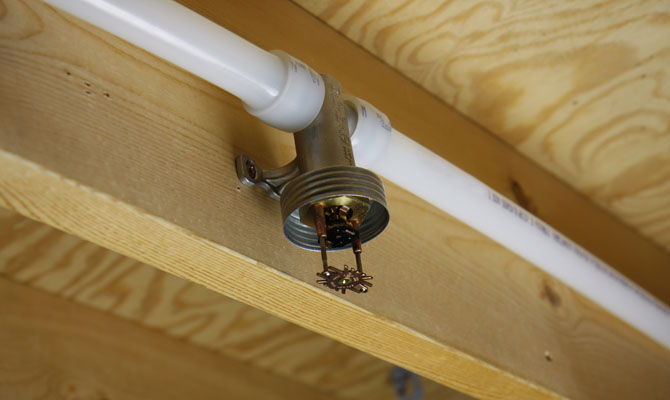I am a fire sprinkler designer by trade. I was trained by and spent the first years of my career with a large regional fire protection contractor designing fire sprinkler systems. Since those early days, I have been a fire sprinkler advocate. I was mentored by some of the early champions of fire sprinkler systems, including Bill Tomes when he served as the fire marshal for the City of San Diego. Bill was one of the strongest voices from the fire service regarding the benefit and need for fire sprinklers. It was an easy choice when the opportunity presented itself to work with Bill in the industry.
Another early and strong champion of fire sprinklers is Ronny Coleman. Chief Coleman is credited with being the first enforcer to convince his jurisdiction (San Clemente, CA) that every structure, including residential occupancies, should be equipped with fire sprinklers. Nearly 40 years later, he is still at the front of the fight for life safety and the promotion of fire sprinklers. To him, it is inconceivable that we still must fight for this proven life and property protection solution.
He recently related the following:
Well, it happened again! A major fire struck a high-rise building, resulting in fatalities to civilians and injuries to firefighters (3 killed and 12 injured in July 2017 high-rise fire in Honolulu). Who is to blame? Some wanted to blame the fire service because the building was lacking built-in fire protection equipment. Others wanted to blame the building for exactly the same reason. The game of finger pointing is well known when it comes to fires of this magnitude and nature.
Honolulu Mayor Kirk Caldwell went on television to say that this will never happen again in his city. There are some who would say that is a promise that is very hard to fulfill. This is because as soon as the smoke clears from the sky, enthusiasm will begin to wane and politicians will start responding to specialize interests. Who would to make a bet with me about whether or not the buildings are retrofitted in the immediate future?
Mayor Caldwell made the statement that the building was built in 1971 and therefore did not have a sprinkler system. Was the technology available to deploy sprinklers in high-rise buildings in 1971? The answer is unquestionably yes. If we went back to 1971 when the building was built, I bet you we could identify a whole host of special interests that would not support sprinklering that building.
The fire chief explained to reporters that, “without a doubt, if there were sprinklers in this apartment, the fire would be contained to the unit of origin.” That truism is almost 100 years old with regard to fire sprinkler protection. Yet, in 1971, a decision was made and the price was paid in less than 50 years for that error.
Chief Coleman goes on to ask, “How much longer are we going to allow high-rise buildings to be used without sprinklers?” He opines that it is a pretty lame excuse to say the building was too old. It comes down to one thing: “Everyone is interested in fire safety until we get into talking about money.” As a result, nothing really changes. The legislature in Florida just killed a high-rise retrofit law because the condominium special interest said it cost too much money. No one will care until the next fire that kills residents or fire fighters and then the debate will start again until the impact of the tragedy recedes from our consciousness.
Investing in good fire protection does not matter until it matters. It is disappointing that so many are willing to take the chance that it will never “matter to me.” As a result, we will continue to lose lives and destroy property in high-rise buildings. Some things are slow to change. However, we cannot ease up on the commitment that fire sprinklers and fire alarms systems working together provide the best possible protection against loss of life in not just high-rise structures but all occupied buildings. Along with other fire and life safety professionals, this is a big part of our mission.
Additional resources available at Residential Fire Sprinklers .com


